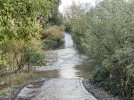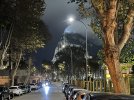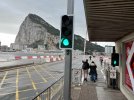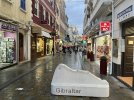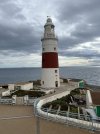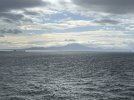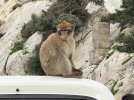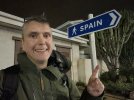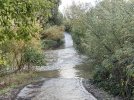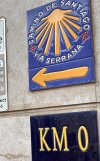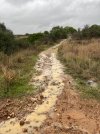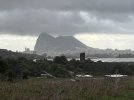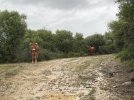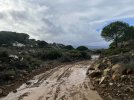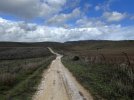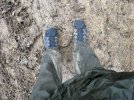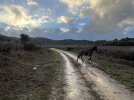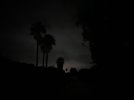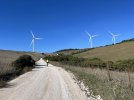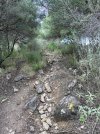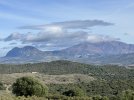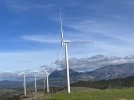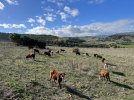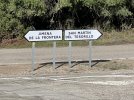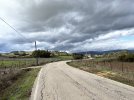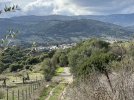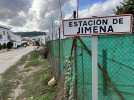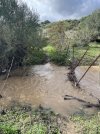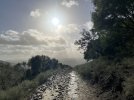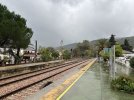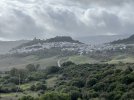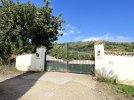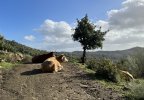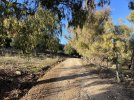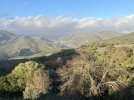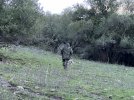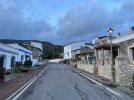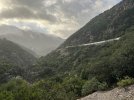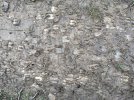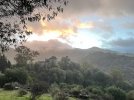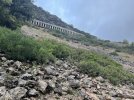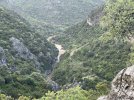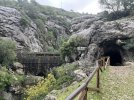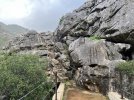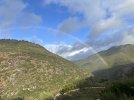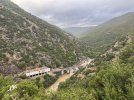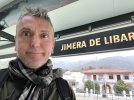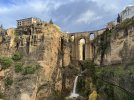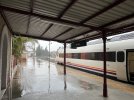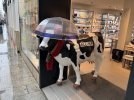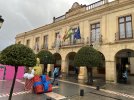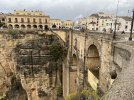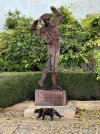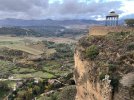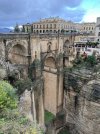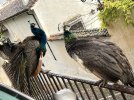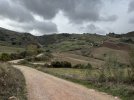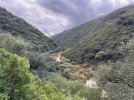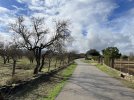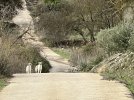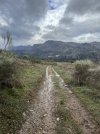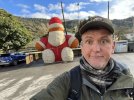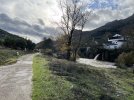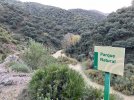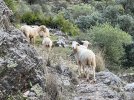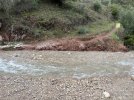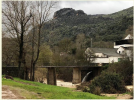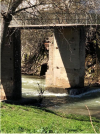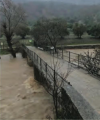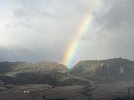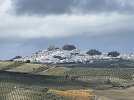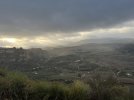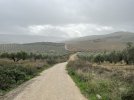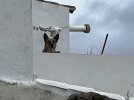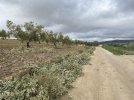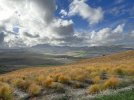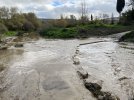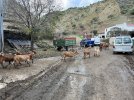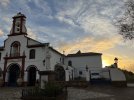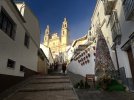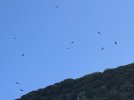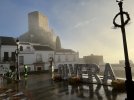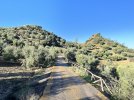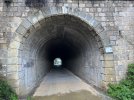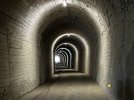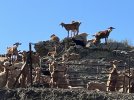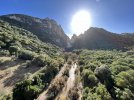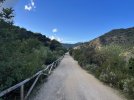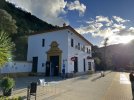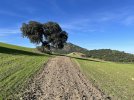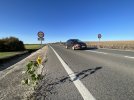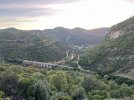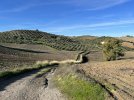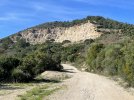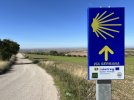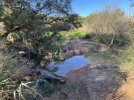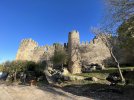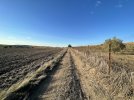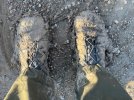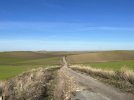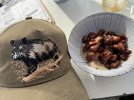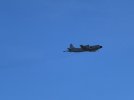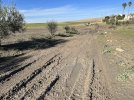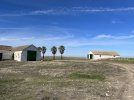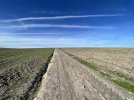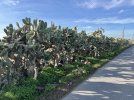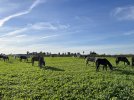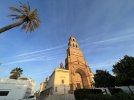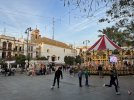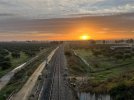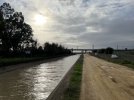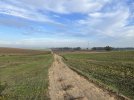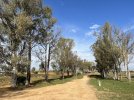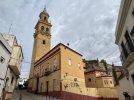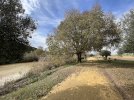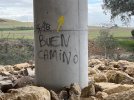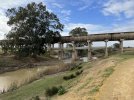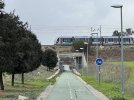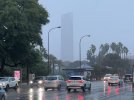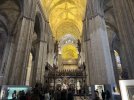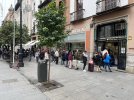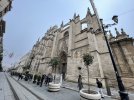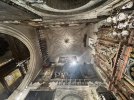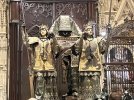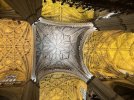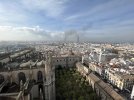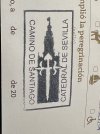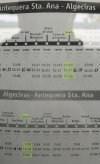Stage 3: Jimena de la Frontera to El Colmenar/Estacion de Gaucin (18 km)
When I woke up it was pouring rain. At around 9am I set out in full rain gear to search for some breakfast. Hospederia Las Buitreras was closed so I walked a few minutes to the station, where I found on open bar. I was astonished that on a Sunday morning there were already two dozen men drinking and chatting to the barmaid. I had my usual Camino breakfast of tostadas, butter, jam, tea with milk and juice. My shoes and underpants were already wet.
I had plenty of time because there is no morning train south. Therefore the JW guide recommends staying in Jimena de la Frontera and travelling northbound in the morning and southbound in the evening for the stages to Ronda. So for stage 3 I had to return Los Ángeles and walk then back to El Colmenar. The first train leaves at 11:53. So I went back to my spacious apartment, packed my little daypack including mask for the train and hoped the rain would stop. Due to the train schedule I had 6 hours till dusk for 18 kms. Quite doable.
Train was on time and at 12:20 I picked up where I left off the day before. The rain was hardly visible then and would soon stop completely. The sky didn’t look bad either. I saw the white village Jimena de la Frontera including the castle on the hill, bypassing it completely Of course, that’s really a shame. But that’s what my schedule required.
The trail was paved at first and then went off the road into a totally wet and quite muddy area. And again thorny bushes. And of course there was an arroyo full of water - not as wide and dramatic as on my first day – but still: impossible to jump over.
You can go back to the road and lose only 30 minutes with this detour. Otherwise you have to step into the feet-deep water and your shoes and socks will be completely wet. With more than 5 hours to go.
View attachment 140485
My inner voice was reasonable and I'm usually a laid back person, but now I got a little angry. NO MORE DETOURS! So I jumped in the arroyo and got my shoes and socks completely wet. With rather grumpy thoughts, I marched uphill, ready to yell at the next obstacle in my path. But the camino led back to the road and soon I arrived at a funeral home next to a beautiful cemetery miles from town. It caught my eye because there was a bench made for grumpy pilgrims. I stopped, ate a power bar and wrung out my socks. I hope this is not considered inappropiate behavior.
After that it got better. I felt the sun on my skin and the sky looked blue. I crossed the Train tracks, hiked through appealing nature and got my camino vibes again. At 2:15pm I had reached the only town on this stage, San Pablo. In the center I saw two open bars. I chose
La Cantina and enjoyed some tapas, coca-cola and a. After this lunch break I passed palm trees, orange trees and nice looking houses before slowly climbing uphill. I reached a gate, actually an important marker (with photo!) on my wikiloc file of this stage. There the gate was wide open and the camino went through. But now it was closed and locked with a chain. According to a sign, there was even camera surveillance. But I couldn't find a camera or anyone around behind the gate. The whole area looked deserted.
Well, you seem to have to walk around. The owner obviously doesn't like pilgrims tramping through his property anymore.
I couldn’t scale the gate but I overcame the adjacent wall and stamped sullenly uphill on the official Via Serrana marked in my wikiloc.
You are aware that you are probably on private property. If there is a free roaming dog it could tear you into pieces. And rightfully so.
I didn’t feel great. But my motto now was: No more detours! Thankfully nothing happened.
I walked past a house to another gate, again closed, but this time it was easy to open and close again, just like the cattle gates on the first day.
The path now went really uphill into the hills and got muddy. And then at 3:30 p.m. there was another obstacle. Right in the middle of the path. Cows! About a dozen stood or lay about and two blocked my way.
They won’t attack if they are no calves and you don’t have a dog. Don’t move hectic.
That’s what I could remember. But what to do? Maybe staring them down? Or playing some cow-friendly music? Do cows like country songs?
As I thought about cow-themed songs, I walked very slowly towards them along the side of the path. Then a cow jumped to its feet and left enough space for me to pass. They seemed only moderately interested in a sunday pilgrim. I turned around the corner and could see the trail getting extremely muddy uphill. It was covered in hoof prints as if the cattle had spent all week running up and down to make the trail look like very tough liquid dough.
View attachment 140487
I struggled a lot not to slip but finally made it to the top, where I sat on a big stone surrounded by straw and mud. It felt like having a break in a cow’s toilet. What’s up next I asked myself.
You wanted challenges. You wanted adventures. Don’t complain. At least its sunny!
The path now led along the hill, the ground became much more walkable, although I was now on the shady side of the hill. I fell into my rhythm and enjoyed the trail again, which offered beautiful views of the valley. A few minutes after 5am I could see El Colmenar down in the valley. Great, with an hour of sunlight I'd be done before sunset. I reached the road to El Colmenar, which went downhill with only a small shoulder but little traffic.
Then I had to choose between staying on the road or taking the camino, which was much more direct across the meadows.
Think about wet arroyos, muddy trails and roaming cattle. The goal is in sight. An understandable and responsible decision would be to stay on the road at least this time.
Out of the question, no more detours, grumpy-me replied to my inner voice, and I slid down the fields in excitement. The path had become a small river, water was flowing downhill, but there was enough room to walk on the wet, uneven grass next to the path. I even enjoyed moving like a rabbit at times when trying to dodge cow dung.
Then I heard several shots. Very close. I stopped abruptly and turned pale. There were a lot of hunting pictures in my apartment, this is obviously a hunting area. And fall is hunting season. I froze and blended into the landscape as my hiking gear was olive green from head to toe and didn't reflect anything. Could I be mistaken for an animal? Maybe a deer?
Then I saw a small hunting dog followed by its owner. He carried a large gun and was walking uphill, possibly hunting birds? He walked by and greeted me. I came back to life and ran down the hill like I was real prey on the run.
I approached the village at exactly 6pm and was really happy and proud that I made it in time before dark. After 3 days it was clear that the Via Serrana has many surprises and challenges in store at this time of year. After a hot shower I went back to the central place and found a restaurant open. The atmosphere wasn't very Sunday-like with loud pop music and young men drinking loudly beer, but the food was eatable. The mixed salad was ok, but Costillas de Cerdo wasn't really my taste.
The restaurant owner stamped my credential upside down and I remembered what my late mother once told me about what it means to receive a letter with the stamp upside down:
Leck mich am Ar... (I don’t give a sh… about you). This made me laugh a lot on the way back to my apartment, as I felt it was somehow appropriate for the day. The weather forecast was unfortunately less amusing. The center of the storm "Efrain" would soon reach my area, I hoped that I could at least enjoy the next day with what is probably the most spectacular stage of the Via Serrana.
…To be continued
View attachment 140484View attachment 140505View attachment 140486View attachment 140500View attachment 140490View attachment 140488View attachment 140502View attachment 140489
